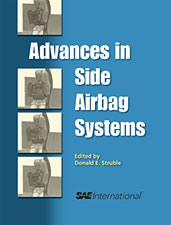Technical Paper
A Comparison Study between PC-Crash Simulation and Instrumented Handling Maneuvers
2011-04-12
2011-01-1121
Lateral acceleration, roll angle, roll rate, and yaw rate vehicle response from PC-Crash were compared to the MSAI sensor data. The authors modeled 26 handling tests. PC-Crash appeared to be a reasonable tool for modeling gross vehicle response. ...This research compares vehicle dynamic simulations in PC-Crash 8.2 to data recorded during instrumented handling tests conducted by Mechanical Systems Analysis Incorporated (MSAI). ...Vehicle weight, center of gravity (c.g) position, suspension stiffness parameters, tire parameters, steering angle, and vehicle speed data provided by MSAI were used as input for the PC-Crash model. Lateral acceleration, roll angle, roll rate, and yaw rate vehicle response from PC-Crash were compared to the MSAI sensor data.

